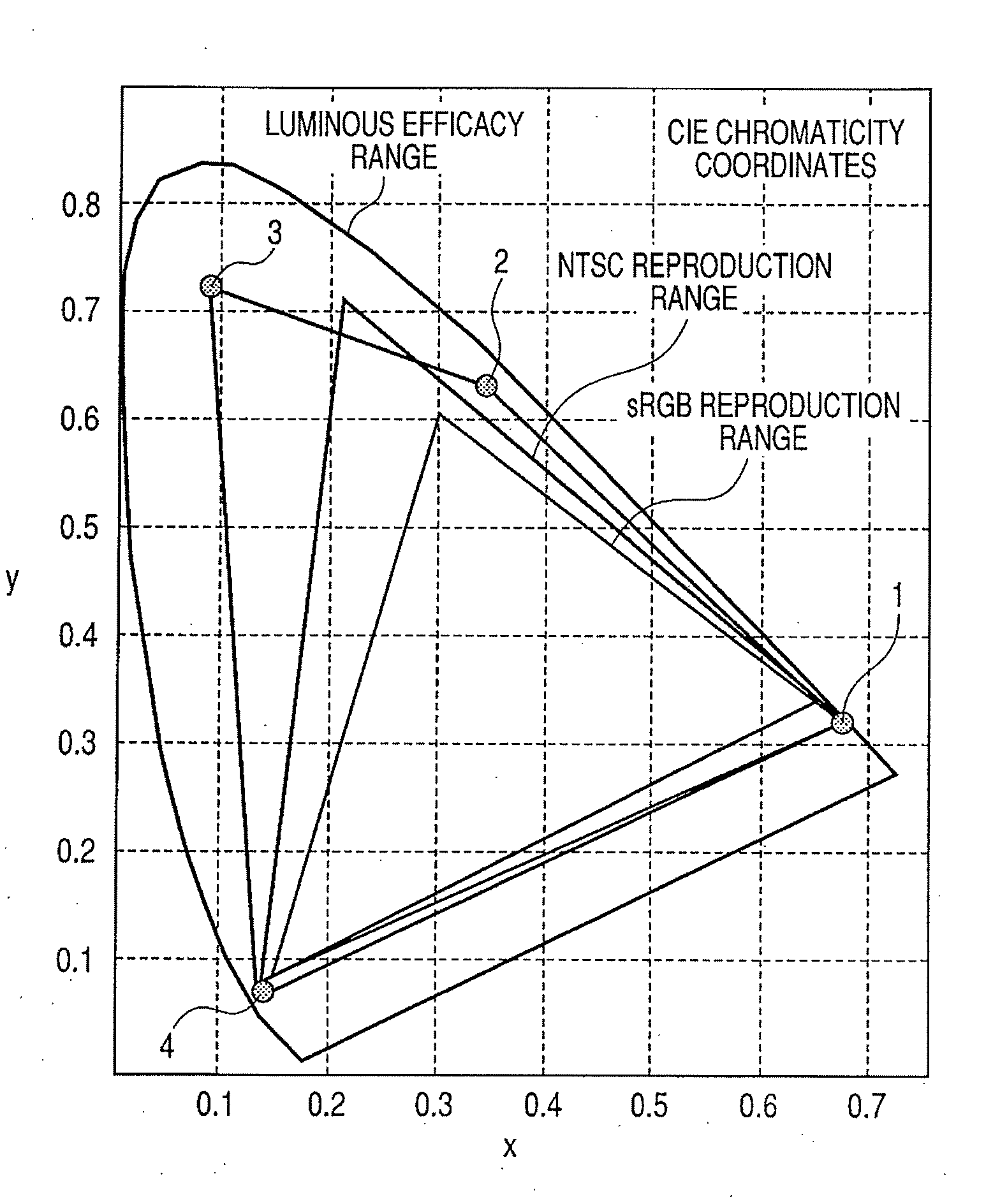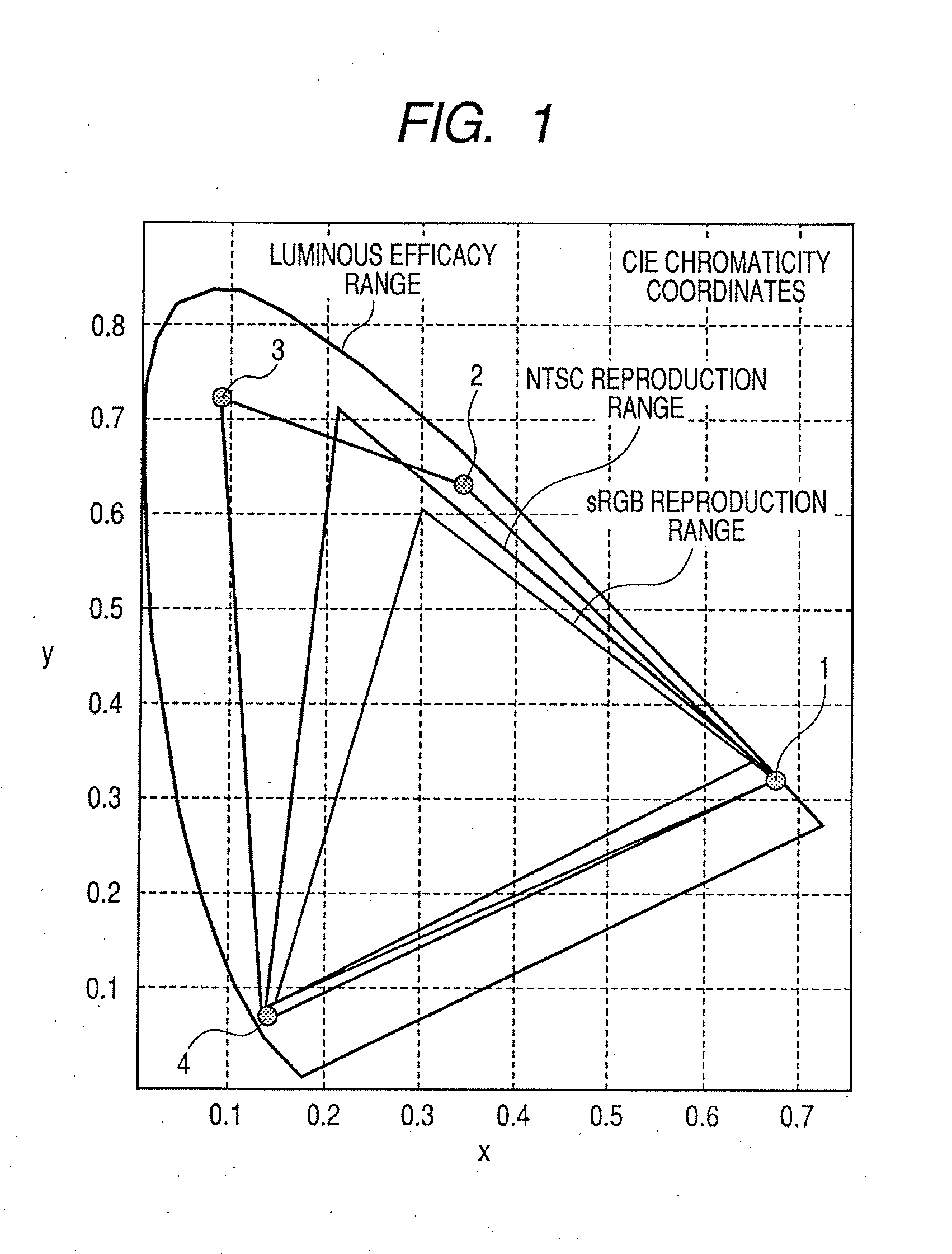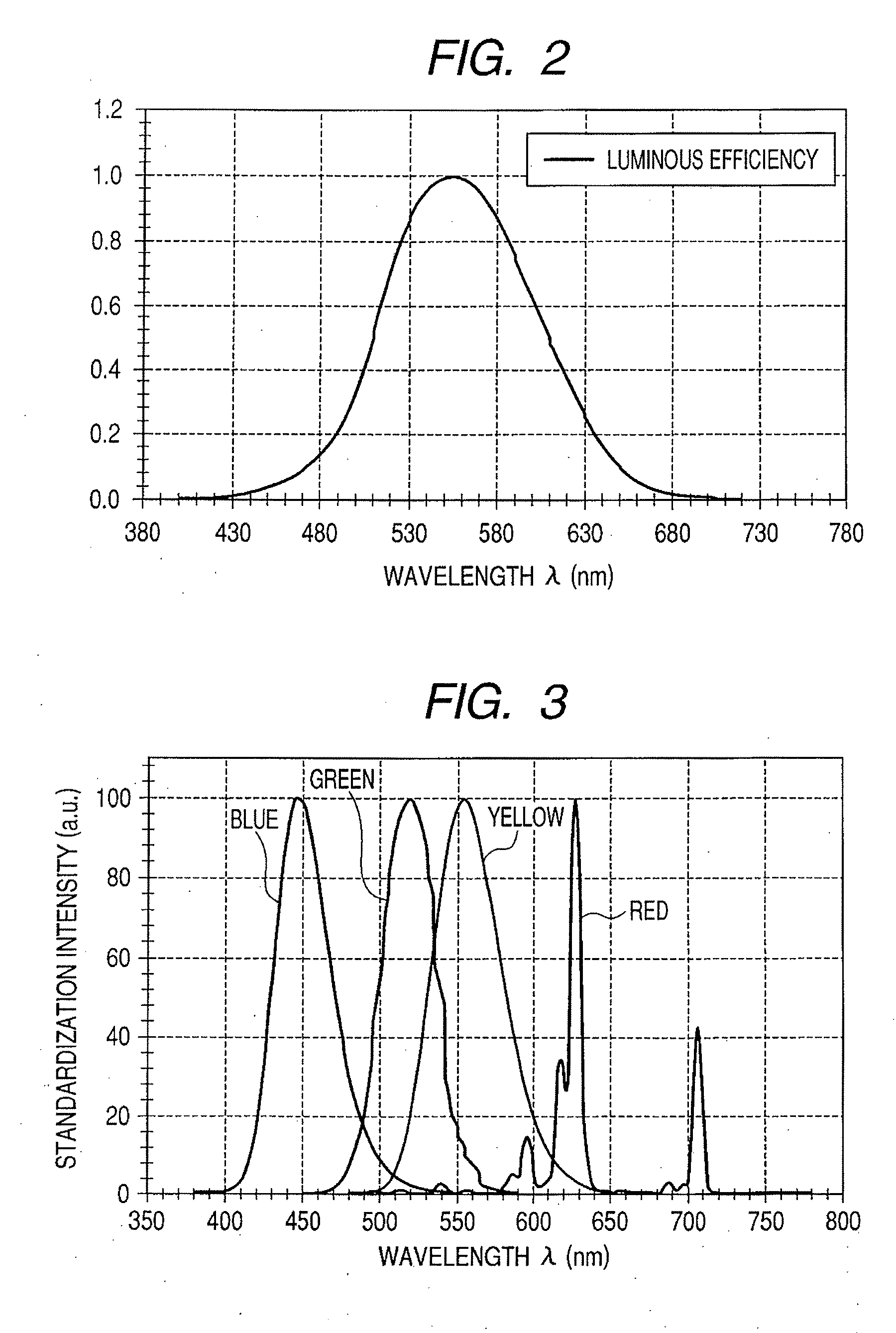Multiprimary color display
a color display and color technology, applied in the field of multi-color display, can solve the problems of still occurring in the field angle, color reproducibility, display, response speed, and difficulty in making pixels minute, and achieve the effects of wide color reproduction range, high luminance, and high efficiency performan
- Summary
- Abstract
- Description
- Claims
- Application Information
AI Technical Summary
Benefits of technology
Problems solved by technology
Method used
Image
Examples
example 1
[0093]The FED is manufactured by the fluorescent members of four primary colors including yellow in addition to R, G and B.
[0094]In this case, Y2O2S:Eu for red, CaAl2S4:Eu for green, ZnS:Ag,Cl for blue, and CaGa2S4:Eu for yellow are used as the fluorescent member materials.
[0095]Here, the areas of the light-emission ranges of respective colors are set to be identical.
example 2
[0107]The four primary color FED is manufactured in the same manner as that in Example 1.
[0108]In Example 1, the areas of the respective pixel elements are set to be identical. However, in Example 2, the red light-emission range is set to be 0.9 times the red range in Example 1, the green light-emission range is set to be 0.9 times the green range in Example 1, the blue light-emission range is set to be 1.3 times the blue range in Example 1, and the yellow light-emission range is set to be 0.9 times the yellow range in Example 1. The FED is manufactured under this condition.
[0109]The display color range of the FED thus manufactured is 124% of the color reproduction range displayed based on the NTSC signal. Further, the light-emission luminance is increased by 46% as compared with the light-emission luminance in Example 1.
example 3
[0110]The four primary color FED is manufactured in the same manner as that in Example 1.
[0111]However, in Example 3, the red light-emission range is set to be 1.1 times the red range in Example 1, the green light-emission range is set to be 0.9 times the green range in Example 1, the blue light-emission range is set to be 1.28 times the blue range in Example 1, and the yellow light-emission range is set to be 0.72 times the yellow range in Example 1. The display unit for one pixel is manufactured under this condition. Incidentally, the design of each light-emission range is acquired by converting the value calculated by adjusting the luminance of each color to satisfy the CIE colorimetry coordinates of designed white when the same power is supplied.
[0112]The display color range of the FED thus manufactured is 124% of the color reproduction range displayed based on the NTSC signal. Further, the light-emission luminance is increased by 59% as compared with the light-emission luminanc...
PUM
| Property | Measurement | Unit |
|---|---|---|
| light emitting wavelength | aaaaa | aaaaa |
| light emitting wavelength | aaaaa | aaaaa |
| light emitting wavelength | aaaaa | aaaaa |
Abstract
Description
Claims
Application Information
 Login to View More
Login to View More - R&D
- Intellectual Property
- Life Sciences
- Materials
- Tech Scout
- Unparalleled Data Quality
- Higher Quality Content
- 60% Fewer Hallucinations
Browse by: Latest US Patents, China's latest patents, Technical Efficacy Thesaurus, Application Domain, Technology Topic, Popular Technical Reports.
© 2025 PatSnap. All rights reserved.Legal|Privacy policy|Modern Slavery Act Transparency Statement|Sitemap|About US| Contact US: help@patsnap.com



